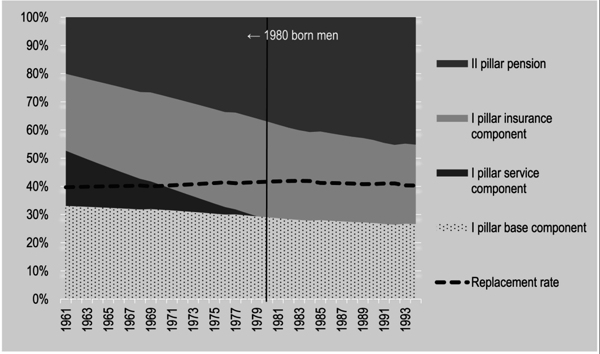The effects on intra‐generational inequality of introducing a funded pension scheme: A microsimulation analysis for Estonia
This article written by Andres Võrk and Magnus Piirits uses a single male cohort microsimulation model to analyse the intra‐generational and distributional effects of a shift in Estonia from a defined benefit pay‐as‐you‐go (PAYG) pension system to a multi‐pillared system with a PAYG scheme with contribution‐based insurance components and a funded pension scheme.
We contribute to the literature on microsimulation by showing how introducing contribution‐based insurance components and compulsory defined contribution (DC) schemes can increase pension inequality. Our results show that in the case of a high level of inequality in labour earnings and high long‐term unemployment rates, such as in Estonia, the introduction of a very strong link between contributions and future benefits leads to considerably higher inequality in pension incomes as measured by the Gini coefficient. Simulation results for Estonia suggest that inequality in old‐age pension incomes more than doubles when the reforms mature. In contrast, the inequality in replacement rates decreases.


Add a comment